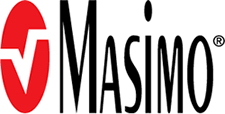
One of the Largest Nonprofit Health Systems in the U.S. Standardizes Care to Masimo SET and Adds 200 Noninvasive Hemoglobin Monitoring Devices and Two Patient SafetyNet Systems within its Network

Banner Health and Masimo (NASDAQ: MASI) jointly announce Banner Health's system-wide conversion to Masimo rainbow® SET technology. The system-wide conversion ensures that patients visiting any Banner Health hospital will be cared for using the most technologically and clinically-advanced oximetry and noninvasive patient monitoring solutions available.
"The decision to convert our entire hospital system to Masimo technology was driven by a simple initiativeto ensure that every Banner Health hospital provides leading-edge medical care," stated John Hensing, Executive Vice President and Chief Medical Officer at Banner Health. "Masimo's rainbow SET platform and patient monitoring solutions offer the most advanced noninvasive measurement capabilities available, providing unique patient care advantages and cost savings."
Masimo Founder and CEO, Joe Kiani, stated, "The significance of a health system of this size and status standardizing on Masimo rainbow SET technology system-wide, placing over 200 noninvasive hemoglobin monitors throughout their hospital network, and installing multiple Patient SafetyNet systems is huge in terms of demonstrating a care provider's commitment to advancing the practice of healthcare and patient safety. Banner Health's adoption of our advanced noninvasive technologies shows that Masimo rainbow SET, noninvasive hemoglobin monitoring, and Patient SafetyNet are key drivers of medical advancements for hospitals worldwide."
Converting Banner Health's entire hospital system to Masimo technology will standardize multiparameter patient monitors, oximeters, and sensors at 23 hospitals and sites of care in seven states. The oximetry standard-of-care at leading hospitals worldwide, Masimo rainbow SET enables innovative noninvasive measurements and patient monitoring capabilities that provide real-time results for critical blood constituents and physiological parameters that help clinicians to more rapidly assess, diagnose, and treat patients.
As the only upgradable oximetry technology platform allowing hospitals to add breakthrough noninvasive blood constituent measurement capabilities that previously required invasive procedures, Masimo rainbow SET continuously and noninvasively measures total hemoglobin (SpHb®), oxygen content (SpOC™), carboxyhemoglobin (SpCO®), methemoglobin (SpMet®), Pleth Variability Index (PVI®), and acoustic respiration rate (RRa™), in addition to Masimo SET 'gold standard' Measure-Through Motion and Low Perfusion oxyhemoglobin (SpO2), perfusion index (PI), and pulse rate (PR) measurements enables monitoring of multiple physiological parameters simultaneously—facilitating earlier detection and treatment of life-threatening conditions.
The conversion will also facilitate the installation of 200 Masimo SpHb-enabled monitors and two Masimo Patient SafetyNet remote monitoring and wireless clinician notification systems. With SpHb, clinicians have the ability to quickly measure hemoglobin levels noninvasively and continuously track them in real-time to detect low or falling hemoglobin levels that could be the result of internal bleeding. Detecting hemoglobin changes earlier allows clinicians to intervene sooner to help protect patients from the potentially disastrous consequences of occult bleeding and post-surgical hemorrhage.
Masimo SpHb and PVI have been shown in numerous clinical studies to provide accurate, reliable, real-time measurements that may help clinicians to more tightly monitor and proactively manage hemoglobin and fluid levels. And, with the Patient SafetyNet system, clinicians can keep patients safer by continuously, noninvasively, and remotely monitoring multiple physiological parameters, and automatically alerting clinicians to changes that signal patient distress or deterioration. Clinically-proven to reduce rescue events and activations by 65% and ICU transfers by 48%, Patient SafetyNet contributes to significant improvements in patient outcomes.1

